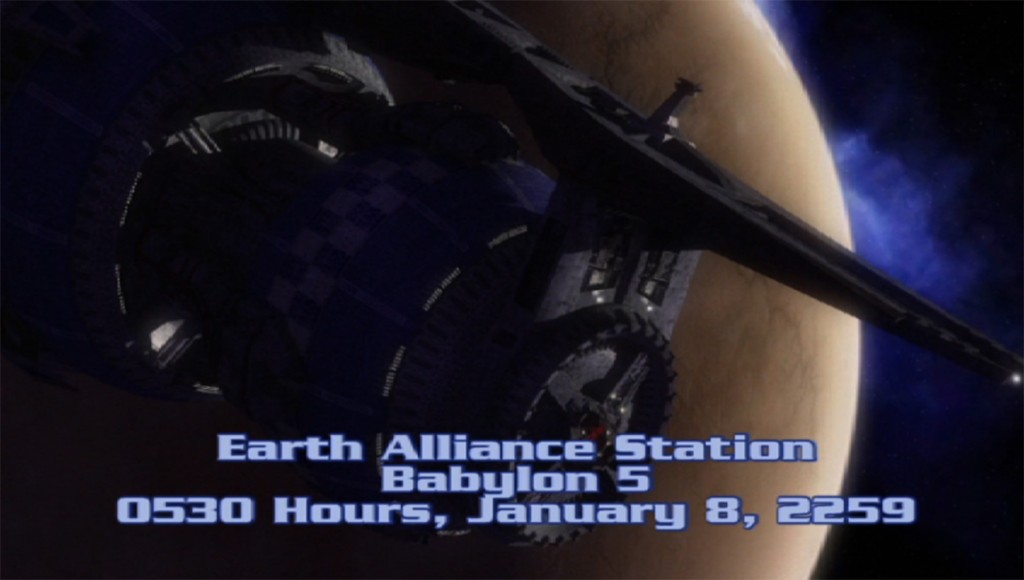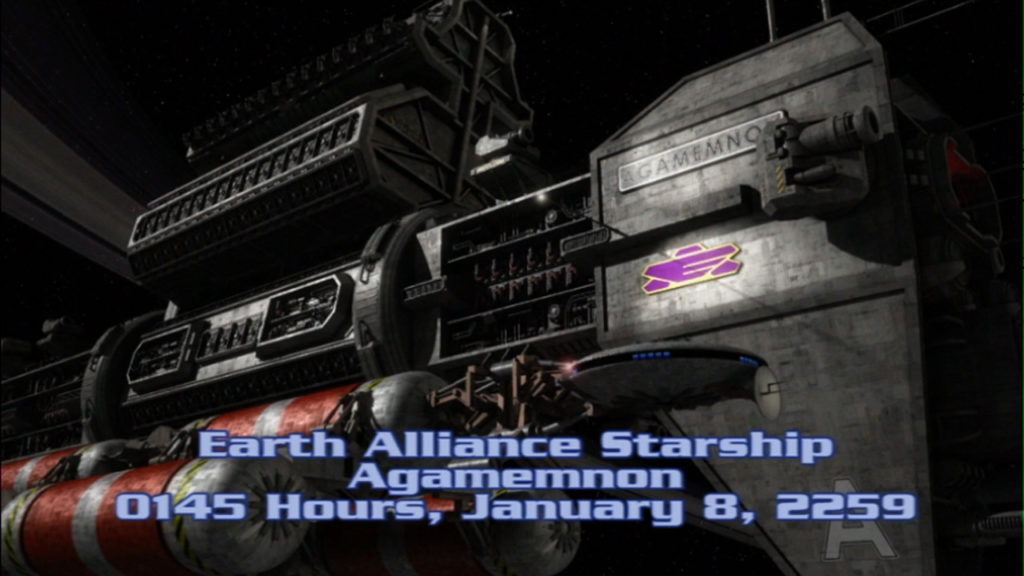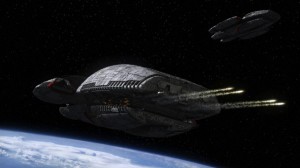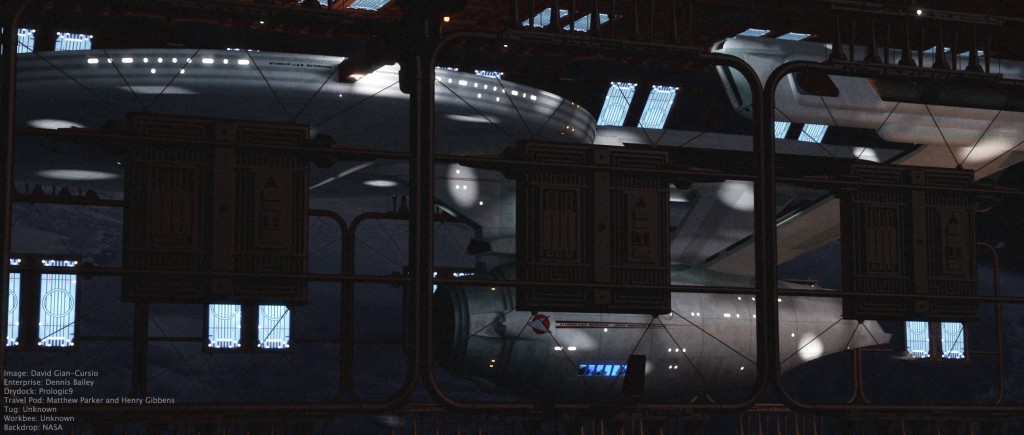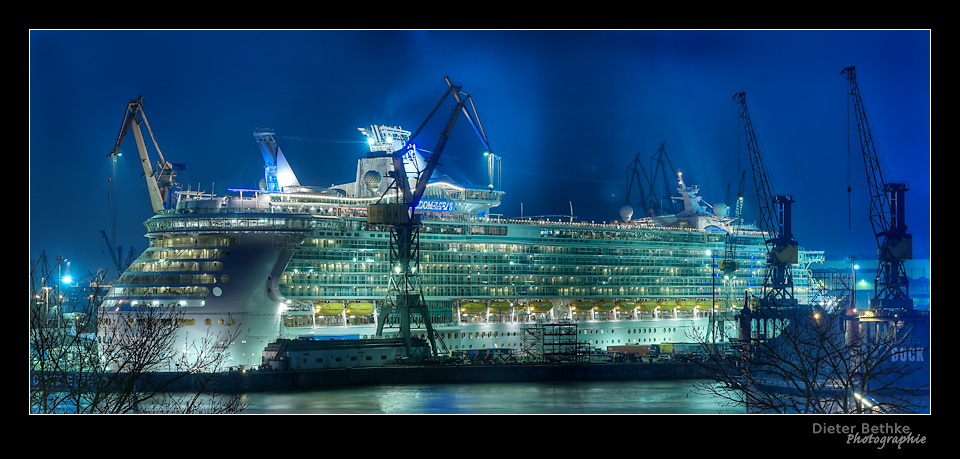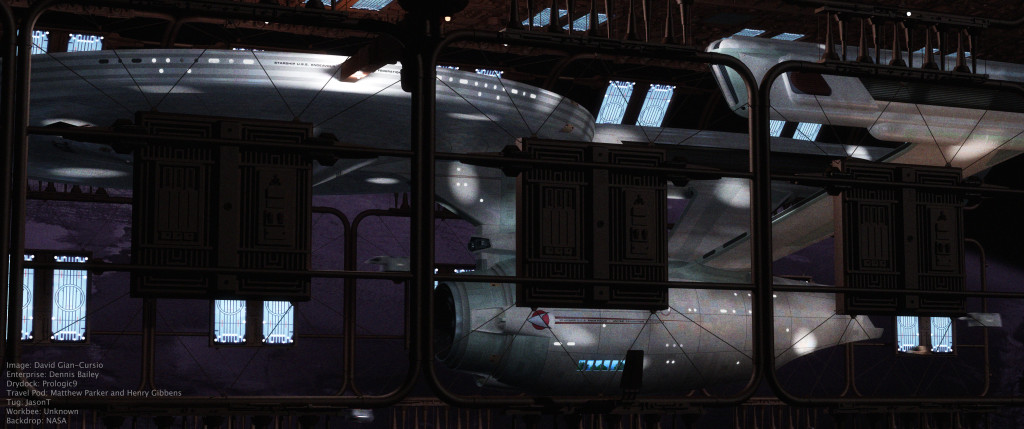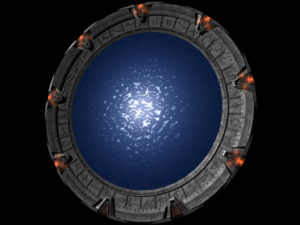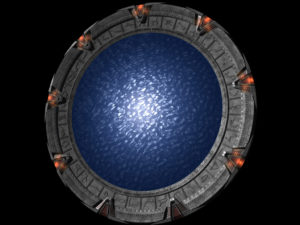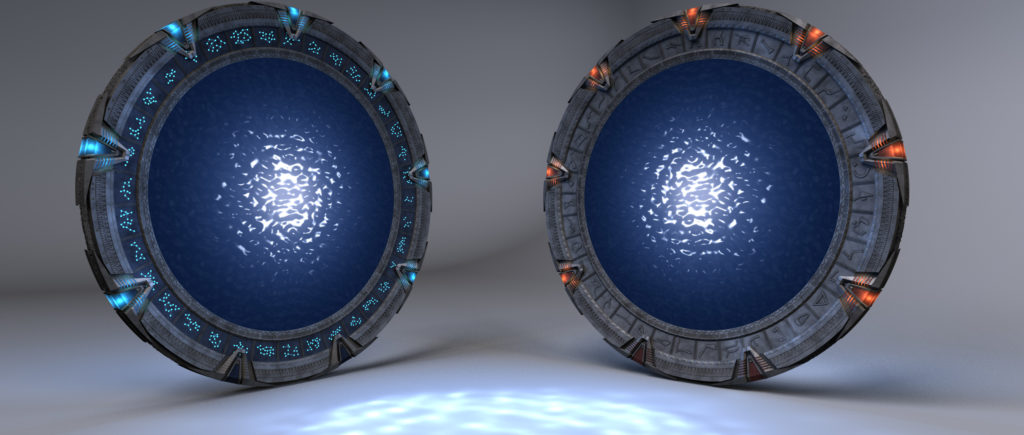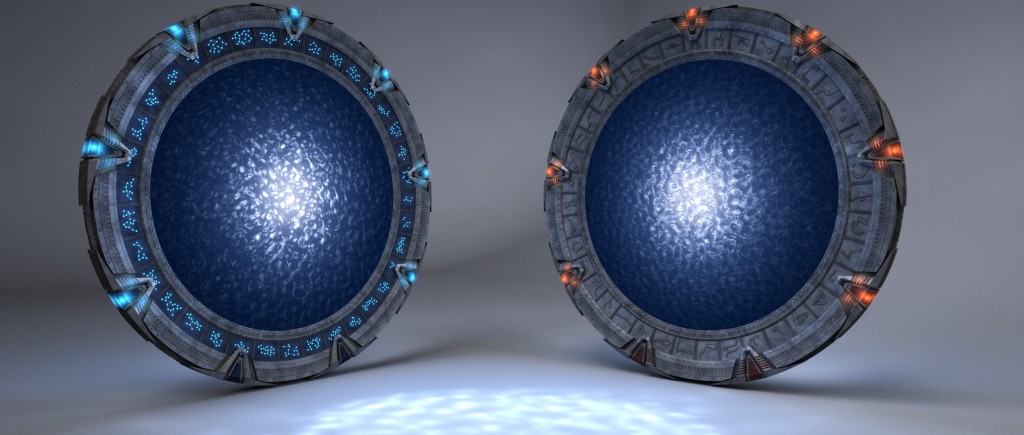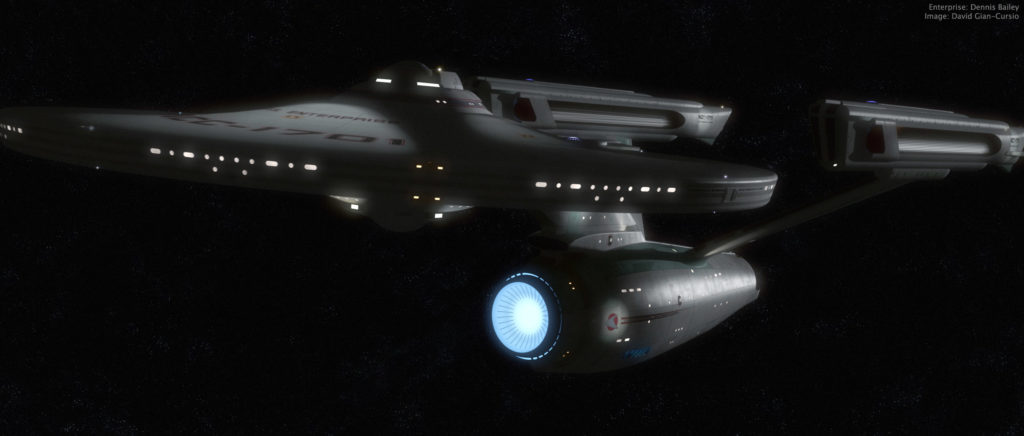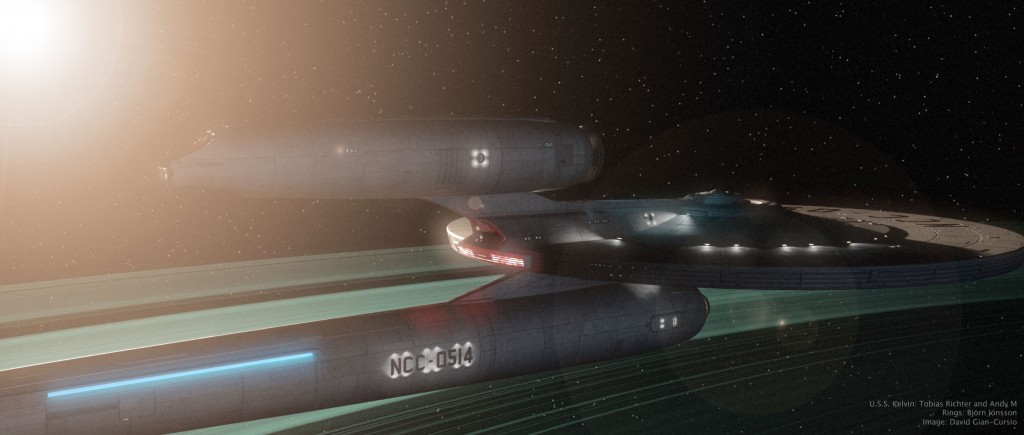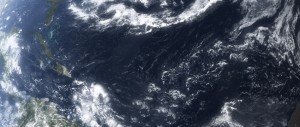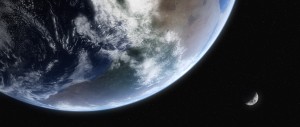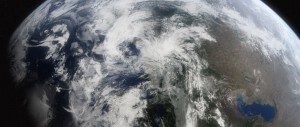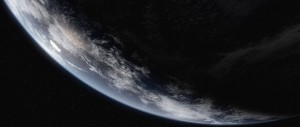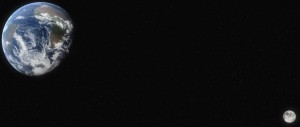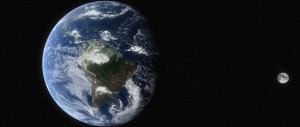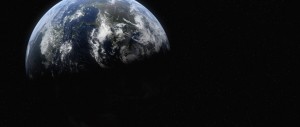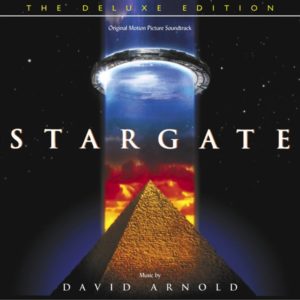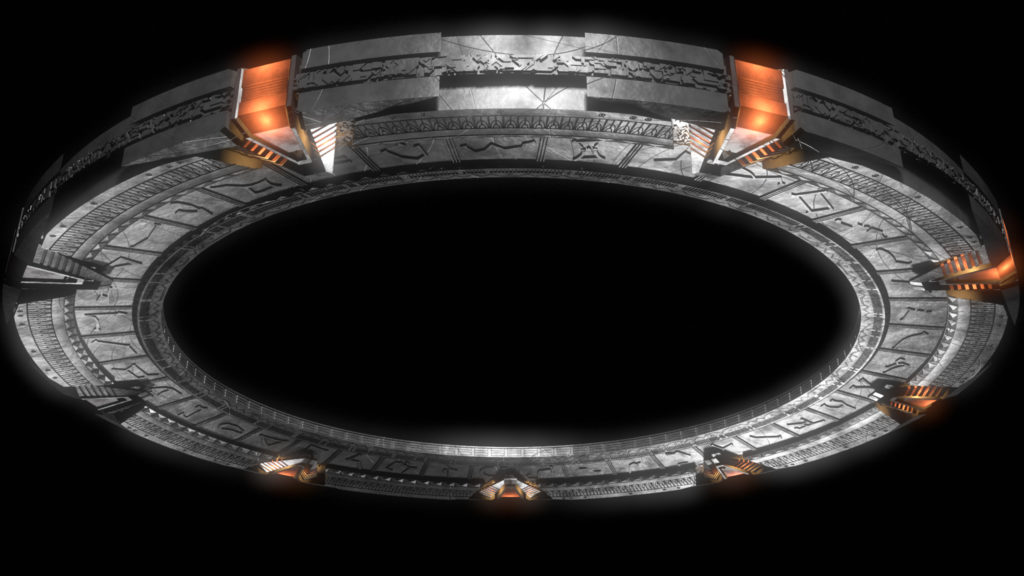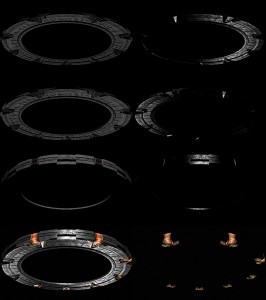Category Archives: Lightwave
Babylon 5 2×01 Effects Update Part 002- Paying Off Karma
So, I’ve still been fiddling with this in the background, conducting some research and prep-stuff. Just to make myself happy, I found an on-line calculator for centrifugal artificial gravity and got a spin-rate for B5 that I could use with authority (once every 90 seconds). I added more of a self-lighting rig on Rhys Salcombe’s Minbari Warcruiser based on Sheridan’s ship in “The Lost Tales,” with lights in the recesses between the ribs, and one of B5 Scrolls’ interviews mentioned how the high deffy Epsilon 3 map was made for TLT (a recolored Mars with a bunch of gouges added from topographical surveys of the Grand Canyon so there’s somewhere for the Great Machine to go) so I shamelessly ripped off that tactic because I don’t trust my own painting ability and it looked fine in the movie.
I noticed something while splitting out the rest of the shots for this episode which amused me. The last establishing shot before the rogue Minbari ship arrives is the sun going down behind B5 and the station lights coming on. The first one after the Minbari are taken care of is the sun coming up. So, I have three choices, near as I can tell.
1- I can ignore it, like they did in the episode. 2- I can keep the establishing shots and redo all the scenes with the Minbari ships to be in local night, which will look cool and/or be an enormous pain in the butt, or 3- I can flip the establishing shots so it’s morning when Lennier explains Season One to Sheridan and Ivanova and evening when everyone meets up at the officer’s club and Sheridan gives his speech to an empty C’n’C. I’m leaning towards the last one as making the most logical sense.
Yesterday I cranked out the next shot in the episode, an establisher of Babylon 5. When I was looking at it, I realized that, as nice and proportional as Ed Giddings’ B5 is (the benefit of being the first one released after plan drawings of the original were released, IIRC), it’s really ’90s in terms of detailing. Since I’d want to replace it as soon as I could with a HD-level version anyway, I decided to phone it in a little and not do a proper shot breakout for this one yet, and just use it as a placeholder for now. Since I didn’t go through all that work, it meant I wasn’t really that upset when I looked at the finished product and found that I’d forgotten to reset my fake nebula radiosity from 30 fps to 24 fps, so the fill light is flickering, and that the red light in the center docking bay has shadow casting on, so the bay flickers off then back on when the little shuttle flies through it.
Babylon 5: Ed Giddings
“Epsilon 3”: Starbase1
Epsilon Nebula: Amras
Starfury: Mark Kane
Starfury Wingart: Chris Guinn
Freighter: Dave Hribarm
Shuttle: Alexander Shareef
Babylon 5 2×01 Effects Update Part 001- Yell. We’ll be there.
So, something I’ve talked about more than once is the pie-in-the-sky idea of an HD transfer of Babylon 5 which, by necessity, would require all-new visual effects, not unlike what was recently done with the original Star Trek series. A couple weeks ago, after school died down, I decided to relax with some nice, simple spaceship layouts, and begin attacking an episode of B5, possibly eventually doing the entire thing. For the moment, though, I’ve just done two visual effects shots in the teaser.
The episode I picked was the season two premiere, and the sequence is the very beginning, the introduction of Captain Sheridan aboard his soon-to-be-former command, the Agamemnon. I never seriously considered trying to be exceedingly faithful to the original shots, mostly because that’d be no fun. I mocked up a couple of images to show what such a recreation might look like, and, who knows, if someone was paying me I’d certainly be open to trying to match the originals as close as possible. But since it’s just me, I figure, why not indulge myself?
I’m not sure if I’m going to move forward on this anytime soon (I certainly haven’t ever completed a long-term solo production yet), but I prefer to live in hope. If I do, I’ll likely revisit earlier shots as I go along to adjust them.
Without further adieu, here’s the shot.
Omega Destroyer by Rhys Salcombe
Freighter by Dave Hribarm
Jumppoint by Yuri A. Parovin
Planet and Rings by Björn Jónsson
As a bonus, here’s a 1080p still from the sequence.
First Cylon War Space Battle
This is going to be a short animation, a sort of spiritual successor to my old BSG picture “Bombardment,” and also an actual successor, in that I’m using the same shells and smoke trails. Actually, I ganked the key and fill lights from that scene, too.
Battlestars by tan.j
Rendered in Lightwave 9
Composited in After Effects
The first shot is pretty much done as far as it goes. I’m planning on doing another two to four shots in this sequence involving an original series Cylon Basestar being blasted in two by this salvo.
I’m going a bit breakout-happy (it already saved my bacon since my first version of the interactive lighting from the shells had an excessively short fall-off distance and I didn’t realize it until I saw everything put together in real-time. It was nice that I could fix that with minutes instead of hours of re-rendering), so I’m thinking about slipping some more stuff into this shot, as well. I found a tutorial on AAA traces that I’m going to try out to see if I can get the wee little guns along the corners of the battlestars to do their thing. I’m also thinking about modeling some extremely low-detail cylon raiders and vipers to buzz around. A flak cloud would be nice, too.
I’m also going to be doing my first real attempt at modeled damage on the basestar, and animating stuff being blasted apart. If anyone knows any good tutorials for flak clouds, modeled damage, or blasting stuff apart in Lightwave, that’d be awesome.
Quiet Night at the Office
I got another bite of the render bug the other day. I’m going to need that to start coming a bit more consistently again.
I originally visualized this angle with a Miranda-class ship, but I don’t have a modern Miranda that’ll hold up to this kind of proximity and detail. While I was assembling the scene, I found I’d already had one from an earlier attempt to make a nighttime drydock render, but I hadn’t been able to settle on a good angle. So I loaded in the old scene, aligned it to fit the picture in my head, added a bunch more spotlights, and rendered it.
I think this works much better as a night shot than my prior attempts have. My initial inspiration for the shot, lighting and mood-wise, was this photo of a cruise ship docked at night:
The background is from NASA’s library of astronaut photos of Earth. It’s actually a shot of the terminator. I desaturated it and then recolored it dark blue to represent a barely-visible nightside. Also, since I figured a night shot would require a longer exposure, I cranked up the motion blur well past 100%, so the various shuttlecraft that are buzzing around are barely-defined blurs.
Updated 2015-09-03:
I’ve re-rendered “Quiet Night” in 5K. There are a couple of deliberate changes in this one compared to the original version of “Quiet Night at the Office.” The most obvious is probably that I repositioned all the travel pods and work bees because I set up the scene to animate and wanted more visually interesting flight-paths. I dialed back the motion blur a bit, as well.
A little more subtle touch is that I changed the ship from the Enterprise to the Endeavour, after a tedious evening of aligning and stenciling text. I wonder if there’s a script or something that you could write to do that.
I brightened up the windows considerably on this image, possibly too much. It’s more like my original aim for them, where they still look a lot like the featureless white of the studio model, but have just the subtlest suggestion of depth. You can just barely see a person in the first long window to the left of the gangway. I also think I might’ve been a bit too heavy on the grain, but I’d like to see it on a retina/hiDPI/5K screen before I make a final judgement.
Updated 2016-02-14:
And here’s an animated version.
Stargate puddle effect: Now with quality!
I don’t even remember what prompted it, but I started fiddling with my four or five year old Lightwave Stargate model this past weekend, and decided to take another shot at something that had heretofore frustrated me, the “puddle” effect.
Originally on my model, I did the highlights in the middle with a specular hit. The trouble is, that only looked right from a head-on view, with the spec coming from a head-on light, with all the scene lights deacivated. I ended up pre-rendering a loop of it, and then applying it to a plane for actual scene work. It took a lot of space, and meant a separate pre-render if you wanted to show another set of ripples form something passing through the stargate. It also tended to look flat from oblique angles. Huge pain, and I always wanted to figure out some way to do it procedurally in-camera.
A couple years ago, it occurred to me that I could help reduce the fakeness of the effect by just pre-rendering the highlights, and having the reflection map I used to break up the ripples be rendered in-camera. This helped, but not really that much.
So, that brings us back to now. I started looking at it, and suddenly realized I could just use a gradient to ramp up the reflectivity closer to the center of the object. The reflections would blow out to white as it got closer to the center, it’d be totally independent of the scene lighting, and it’d shift subtly with the angle of the camera.
It’s just. That. Easy.
Old Effect:
New Effect:
Anyway, I fiddled around with it further to perfect it, all the while kicking myself that this perfectly obvious solution hadn’t occurred to me five years ago when I started trying to nail this.
Also, if I’d figured it out then, my interactive lighting solution would still work. Apparently, something in Lightwave has changed in regards to caustics and refractions, breaking my old solution, leaving me stymied.
From the rear, the stargate effect looks the same as the front, except semitransparent, and occasionally with a ripply refraction effect, if the VFX people think it’s worth it this week. Simple enough, right? And so it was. Just the same texture as the front, slightly transparent, and with an appropriate refraction index.
The stargate also vomits light out of the front, like sunlight reflecting off water onto a building. I replicated this with a spotlight shining through the back, with caustics enabled (and rediculously cranked up), through a dummy puddle hidden from the camera with a higher refraction index so it would look right. And look right it did!
Now, though, the transparent back doesn’t work properly, apparently catching a reflection of the front despite the fact that the front side of the puddle is one-sided polygons in every way it’s possible for polygons to be one-sided. Now that I’m talking about it, I think I remember something about caustics or refraction being altered in Lightwave 9 to remove the nessessity of “air polys.” That could have something to do with it.
Well, that’s not too bad. I just live without the refractive back. No big. Unfortunately, the caustics are just wrong. They move very slowly in one direction, and flicker like it’s going out of style. It looks like nothing so much as a helicopter’s blades on film, a wide blur slowly moving around and around.
I backtracked to the versions I did my old test renders with, and made sure the problems weren’t the result of something I changed (which it seems to be in one other case, where the spot I used for the caustics ignored the caustics object and went through the proper puddle, despite having exactly the opposite set in the “exclude object from light” settings. That’ll be a fun one to track down). I’ll continue fiddling with it in the coming days to see if I can figure some new workarounds for it. I’m also thinking about trying to do a kawoosh now that I’m looking at it again, having seen some spiffy CG ones on youtube (including one that used my gate model).
At the moment, though, my gate looks fine from the front, and the lighting looks fine in a still.
New Effect:
Updated January 30, 2015
I’ve rendered a 5K version of the showcase image.
Just a quick refit-Enterprise beauty shot
(I just realized writing the topic, I really can’t call this ship “the movie Enterprise” anymore)
I suddenly felt the spirt move me today waiting for class to begin, and fired up Lightwave for a quick pic. I couldn’t have spent more than ten minutes setting up the camera and the key light (and most of that was fine-tuning the light to get a spec hit I liked). Since it was just me doing a quick little thing, I didn’t do a proper multi-file breakdown, but instead manually turned on and off each set of lights and glows to render out six layers (ambient occlusion, key diffusion, key spec, model glows, the model’s self-light rig, and the model’s lighting-rig’s lens flares), all saved as HDR .exr files.
I felt like trying something new, so rather than using my trusty old BetterSpace star field (first thing I ever made in Lightwave!) I gave Greg Martin’s photoshop star field a shot. It’s definitely different. More painterly than usual. Also, while I was looking it up, I saw Greg Martin’s doing a cool eight-planets multi-artist astronomical art thing that I thought was pretty inspiring.
Anywho, I adjusted and bloomed the heck out of all my passes, slapped in some film grain, and called it done. Well, there was a little more fine-tuning and experimentation involved than that makes it sound like, but it’s really more fun to do than it is to talk about.
Stardate 1277.1— All is Well
Ship’s Log, U.S.S. Kelvin, Stardate 1277.1. Captain Richard Robau recording.
We are on course to deliver our cargo of colonists and supplies to Beta Antares IV. The journey remains uneventful, and all is well. On a personal note, it gives me great pride to record in this log the first birth on board the Kelvin. James Tiberius Kirk was born this morning to Lieutenant Commander George and Lieutenant J.G. Winona Kirk. James is named for his grandfathers, and is the Kirks’ second son. On behalf of the entire crew, I’d like to note our congratulations and good wishes on this happy occasion.
So, here’s how it happened in the Prime Universe (“Harold,” to its friends). No Red Matter singularity, no diversion to the star to investigate, no mystery attack, just another day in space. My own little (very little) twist on the opening sequence of the new Star Trek. I pretty much had to do it as soon as I saw that a Lightwave version of Tobias Richter’s Kelvin was available, since I felt that it totally stole the show.
Revamped Earth, because I can’t resist a bandwagon
After seeing those sweet-looking new Earths in the Foundation3D WIP forum, I just had to get in on the action myself. I’d started to think my Earth, made from Dean Scott’s tutorial with the Blue Marble maps, looked cartoony, so I began fiddling with it.
I reduced the diffuse sharpness on the surface object so it would begin to shadow more quickly, making the clouds keep their brightness slightly farther into the night side. I darkened the surface, as well, so it was a bit less shiny and colorful. I also made the cloud layer brighter, and reduced the transparency of the atmosphere object away from the edges to help flatten the contrast of the planet.
I also swapped out the moon map with a new one I found that didn’t have shadows on the craters (which kept making them look like domes unless I kept the camera and the sun light at specific angles), and I found where the high-res Blue Marble cloud data was hiding on-line. I needed to fill in the poles with cloned data from the regular resolution version on their website, and then I had to shrink it down so it would actually load, so it ended up being only negligibly larger than the version I’d been using. At least I have a 43,200 x 21,600 cloud map waiting for the happy day when my desktop replacement is replaced with a desktop and I have the kind of power I’d need to use it.
(Incidentally, the cloud map can be found here, in two 21,600 by 21,600 chunks. Here is the smaller version I used to fill in the missing data at the poles, rather than painting in my own.)
After I rendered out these shots in LightWave, I saved them as HDRIs, as is my custom, and brought them into Photoshop for my usual bloom-and-grain treatment.
Just so everyone can see the difference, here’s that last one twice more, first with my old Earth model, and second with the new one just as it came out of LightWave, with no post work.
Movie-poster style Stargate image
A while ago, I came up with the idea to try to recreate the image of the stargate used in the original movie poster in 1994. I finally got around to it after matching the angle last night for an AO render in the “New Headers” thread. To get that extra-shiny look, I rendered it in seven passes; three lights, each with a separate diffuse and specularity pass, plus one for the red chevron lights. I saved them all as HDRIs, and put them together in Photoshop, adjusting the gamma and exposure of each layer, with blending mode set to “Linear Dodge (Add).” Once I had it the way I liked it, I merged them together into a single HDR layer, and used that to make the bloom effect. I think it’s a little strong, but that’s why we’ve got layers. I can fiddle with it more if I want to use it in the future.
I’m not sure if I’ll ever end up using the image for anything, but it ended up being a pretty fun exercise.
The reference image

